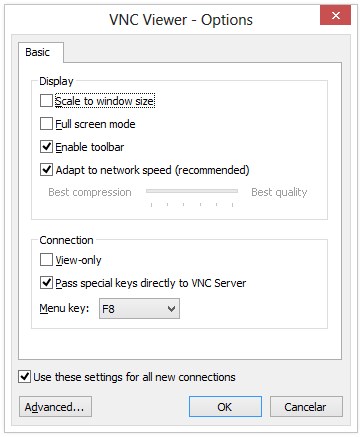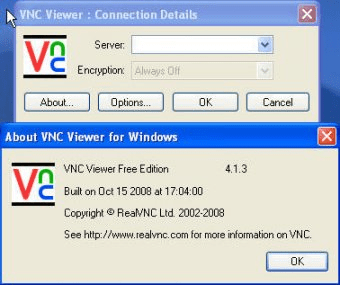

- #Vnc viewer download windows 10 install#
- #Vnc viewer download windows 10 manual#
- #Vnc viewer download windows 10 password#
- #Vnc viewer download windows 10 Pc#
- #Vnc viewer download windows 10 free#
VNC, the Remote Frame Buffer protocol (RFB) allows a desktop to be viewed and controlled remotely over the Internet. It means that you can work on a remote computer, as if you were sitting in front of it, right from your current location.
#Vnc viewer download windows 10 Pc#
The program allows you to use your mouse and keyboard to control the other PC remotely.
#Vnc viewer download windows 10 free#
Where XX:XX:XX is the walltime required for your visualisation job.UltraVNC is a powerful, easy to use and free - remote pc access softwares - that can display the screen of another computer (via internet or network) on your own screen. Then call the prepare the visualisation queue job and connect to the reserved visualisation node via the vglconnect load -s n150701

Īfter the installation of VirtualGL you can connect to via the vglconnect -s It is available in the form of pre-compiled packages at.
#Vnc viewer download windows 10 install#
To use VirtualGL you have to install it on your local client.

The you can need to start your VNC client and connect to the address localhost:10000. Open a command prompt window and run PLink with the options

#Vnc viewer download windows 10 manual#
In this manual tunneling is required, which can be done using the PLink tool which comes with the distribution. VNC viewers for Windows often do not support the '-via' option to tunnel via SSH. If the vnc session isn't needed any more and the requested walltime isn't expired already you should kill your queue job Since the X0-VNC server is directly reading the frame buffer of the visualisation node's graphic card, GL applications can be directly executed within the VNC session without using any wrapping command. GL applications within the VNC session with X0-VNC To execute 64Bit GL Applications within this session you have to open a shell and again load the VirtualGL module to set the VirtualGL environment and then start the application with the VirtualGL wrapper command GL applications within the VNC session with TurboVNC
#Vnc viewer download windows 10 password#
If you got a VNC viewer without support of the vis option, like JavaVNC or TightVNC for Windows, you have to setup a ssh tunnel via the frontend first and then launch the VNC viewer with a connection to -N -L10000::5901 localhost:10000Įnter the vnc password you set on the frontend and you should get a Gnome session running in your VNC viewer. If you got a VNC viewer which supports the via option like TurboVNC or TigerVNC you can simply call the viewer The vis_via_vnc.sh script returns the name of the node reserved for you, a display number and the IP-address. There is also a -help option which returns the explanation of the parameters and gives examples for script usage. A session started with this option will have a maximum resolution of 1152x864 pixels which can not be changed. As its name says this server is directly connected to the :0.0 Display which is contoled by an X-Server always running on the visualisation nodes. If x0vnc is specified instead of a TurboVNC server with own Xvnc Display a X0-VNC server is started. The geometry option sets the resolution of the Xvnc server launched by the TurboVNC session and has to be given in format 1234x1234. Where walltime can be specified in format hh:mm:ss or only hh. To control the configuration of the VNC session the vis_via_vnc.sh script has three optional parameters. Then load the VirtualGL module to setup the VNC environment and launch the VNC load will set up a default VNC session with one hour walltime running a TurboVNC server with a resolution of 1240x900. To start a TurboVNC server you simply have to login to the cluster frontend via vnc directory in your home containing a passwd file. Other VNC viewers can also be used but we recommend the usage of TurboVNC, an accelerated version of TightVNCĭesigned for video and 3D applications, since we run the TurboVNC server on the visualisation nodes and the combination of the two components will give the best performance for GL applications.īefore using vnc for the first time you have to log on to the Nehalem frontend and run For Fedora 13 the package tigervnc is available via yum installer. TurboVNC comes as a pre-compiled package which can be downloaded from. For that purpose you have to download/install a VNC viewer to/on your local machine.Į.g. for graphical pre- and post-processing, on way to do it is via a vnc-connection. If you want to use the vulcan Graphic Hardware e.g.


 0 kommentar(er)
0 kommentar(er)
